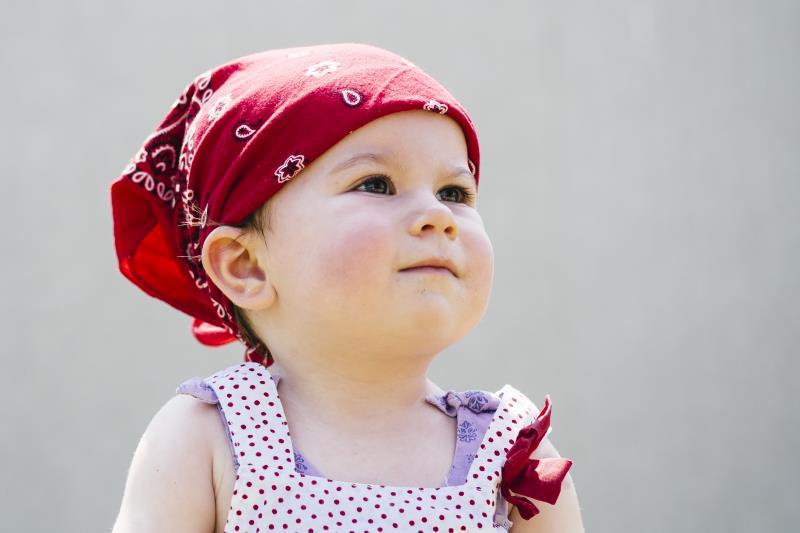The anti–interferon-γ antibody emapalumab has shown signs of efficacy and safety in children with primary hemophagocytic lymphohistiocytosis (HLH), reveals a phase II/III study.
“This is a very important advance. For the first time, we have a truly targeted way to treat HLH and a drug with very low toxicity,” said coprincipal investigator Dr Michael Jordan from the Cincinnati Children’s Hospital Medical Centre in Ohio, US, in a press release.
A rare illness characterized by immune dysregulation and hyperinflammation causing multi-organ destruction, HLH usually manifests in infancy and may be fatal if left untreated. [Blood 2011;118:4041-4052] The treatment goal is to suppress inflammation to allow allogeneic hematopoietic stem-cell transplantation (HSCT), which is the only cure for HLH, noted the researchers.
Thirty-four children (median age 1 year) who had or had not (n=27 and 7, respectively) received conventional therapy* were given emapalumab with dexamethasone** for 8*** weeks. [N Engl J Med 2020;382:1811-1822]
Overall responses# were noted in 63 percent (p=0.02) and 65 percent (p=0.005) of patients who had and had not received previous treatment. “[T]hese percentages were significantly higher than the prespecified null hypothesis of 40 percent,” said the researchers.
Though higher than in past evidence, [Blood 2011;118: 4577-4584] the small group of previously untreated patients in the current study should be taken into context. “[M]ore patients must be evaluated before conclusions can be drawn about the efficacy of emapalumab in this group,” they said.
Seventy percent and 65 percent of patients in the respective previously treated and untreated arms were able to proceed with HSCT, which mirrored previous reports [Blood 2018;132:1438-1451]. “This may be related to the ability to decrease doses of glucocorticoids and prevent toxic effects associated with conventional [HLH] therapies,” they said.
At the last observation, 74 percent and 71 percent of previously treated and untreated children were alive.
Interferon-γ neutralization
Elevated interferon-γ levels in HLH patients signify active disease. Studies in mice have shown that neutralizing interferon-γ led to survival or reductions in signs and symptoms. [J Allergy Clin Immunol 2018;141:1439-1449; Transl Res 2017;180:37-52-e2]
In the current study, CXCL9 (ie, an interferon-γ–induced chemokine) levels rapidly and markedly dropped on day 5 (median, 30 percent of baseline level). “Logistic regression analysis indicated that low CXCL9 levels were associated with a response at the end of treatment. [T]hese findings provided support for neutralization of interferon-γ as a relevant therapeutic objective in patients with HLH,” explained the researchers.
Low toxicity
Emapalumab did not appear to worsen adverse events although HLH patients are usually ill. “Most were mild and attributable to reactivation or worsening of HLH, co-existing conditions, toxic effects of co-administered drugs, or all these variables,” said the researchers. Infections resolved with antimicrobial therapy. There were no reports of myelosuppression, which is typical with conventional etoposide-based therapy. [Blood 2017;130:2728-2738]
No additional safety concerns were reported in patients receiving additional therapy## due to inadequate response to emapalumab. This, as per the researchers, could be due to the small study sample and the few, reduced doses of the added regimens.
New standard of care?
Etoposide and glucocorticoids, with or without cyclosporine, were the traditional treatments for HLH, noted the researchers. However, these did not curb mortality rates owing to toxic effects (eg, myelosuppression, generalized immunosuppression). [Pediatric Blood & Cancer 2016;63:S44-S45]
“[As] this is the first ever [FDA-approved] drug for HLH, this study underscores that we should consider emapalumab … with dexamethasone to be the standard of care for ‘second-line’ treatment of HLH [following ineffective] traditional approaches,” said Jordan.
“[Overall, the study shows that] neutralizing interferon-γ and controlling hyperinflammation with emapalumab were efficacious, [suggesting its potential as] targeted therapy for patients with HLH,” said the researchers.
Further exploration is required to ascertain the impact of emapalumab in patients with secondary forms of HLH in whom interferon-γ has been deemed pathogenic, noted the researchers. Despite the lack of substantial improvement with additional therapies, it remains an option for difficult-to-treat HLH cases, they added.
*Dexamethasone and etoposide
**Emapalumab – starting dose of 1 mg/kg of body weight every 3 days; subsequent doses may be increased to 3, 6, or 10 mg/kg. Dexamethasone – median daily dose of 10 mg/m2 of body surface area at baseline, tapering by at least 50 percent at 8 weeks.
***Cut to 4 weeks if donor availability and patient’s condition allowed HSCT
#Complete or partial response, or improvement in HLH measures
##Intrathecal therapy (glucocorticoids, methotrexate, or both), cyclosporine, etoposide, or alemtuzumab
